We have jarred up this year’s batch of Summer 2021 honey. Buy from our website for click and collect or buy from the door. Produced by our bees in Bickington. Harvested using craft skills and traditional methods. Our Honey is unadulterated, filtered and not heat treated. Therefore, retains all its natural properties!
Tag: Bideford
Spring 2021 Poor Weather Means No Spring Devon Honey
Our 2020 Honey sold out rapidly last year. Throughout the seasons we regularly get asked if we have honey for sale and look forward to when we can sell it again. Unfortunately for the bees, the Spring 2021 weather has been poor. As a consequence our bees have been unable to get out and about to gather sufficient nectar for a surplus of spring honey to sell. Hopefully we may have some honey in August. We will notify all our Honey Newsletter subscribers when available. If you want to know when honey is available, sign up to our Honey newsletter.
Bickington & Fremington Devon Honey For Sale
We have jarred up this year’s Summer 2020 Honey which is now for sale. Collected and produced by our bees. The girls have again done us proud, the runny honey tastes delicious. Although it will probably crystallise over time (as all naturally produced honey does), when it goes solid, we provide instructions on how to make it liquid again.
Bickington & Fremington Devon Honey For Sale
We have jarred up this year’s first batch of honey (Spring 2020), which is now for sale. Collected and produced by our bees. This spring honey is still runny and floral. Although it will probably crystallise over time (as all naturally produced honey does), when it goes solid, we provide instructions on how to make it liquid again.
Sticky Morning
This morning has been spent jarring up some of this year’s spring honey. The hives have done really well, building up the colony, but also out and about collecting and abundance of nectar.
Now onto labelling and getting out for sale.
Roll on the summer honey flow!
Marking the Queen Bee
As the season draws to a close, it gives me a chance to undertake some final checks on the colony and perform some house keeping.
Today was a chance to mark some of this year’s queens. The queen bee is larger than the workers, but is often difficult to find amongst all her daughters. Being able to easily see her speeds up the hive inspection.
Queens are colour coded depending on the year, this helps you remember their age. For 2019 the colour is green.

The #BidefordHoneyBeeSwarm continues to grow
A very quick inspection the other evening, showed that the swarm collected a month ago has a queen that appears to be laying well.
Since the swarm was collected, they have been creating comb to store honey and pollen in as well as provide the queen a place to lay eggs for the next generation of bees.
I have been regularly checking the new colony to ensure that they are healthy and have no visible signs of disease. There is always the chance, when collecting a swarm of bees, that they bring back a disease to the quarantine apiary such as EFB (European Foul Brood) or AFB (American Foul Brood), both of which are contagious, and notifiable to DEFRA.
The new colony is looking very healthy and the queen seems to be laying healthily producing eggs and brood (bee larvae)



The Queen is Laying!
The #BidefordHoneyBeeSwarm, collected from Bideford in Devon, has settled into its new hive nicely.
With the poor weather, I have continued to feed the bees, which has enabled them to build comb quite rapidly.
I inspected the bees last Sunday to discover a whole frame (both sides) full of sealed brood (bee larvae) and a large Healthy Queen bee walking around. This is a very positive sign!
I often get asked “What does the Queen look like?”. In this picture, in the middle, you can see a Queen Bee that has just returned from a mating flight.
Surrounded by attentive workers, she will soon get slightly bigger to the extent that she is unable to fly. At her peak she could be laying in the region of 1,000 eggs a day!
Collected Swarm Settled In to the Quarantine Apiary
The second part of #BidefordHoneyBeeSwarm. A couple of days ago, I collected a swarm of honey bees from Bideford.
The small colony of bees collected from the plum tree have been put into a small hive (Nuc) and placed in the quarantine apiary. Here they will be treated for disease and on day 3 fed a light sugar syrup to help them build in size.
Currently I have placed the Nuc next to the hive where they will be housed.
The bees have started leaving the Nuc and familiarising themselves with the surrounding area. You can see this by their behavior. When the Nuc was first positioned and the bees let out, they would emerge from the Nuc and fly in ever increasing circles up into the sky.
This is to allow them to spot landmarks and orientate in relation to their new home.
The next step will be to feed and medicate the new colony.
Two Swarms Collected from Bideford this week.
Today I collected my second swarm this week from the Bideford, North Devon.
A large swarm collected yesterday in a plum tree and was still present today, so I nipped along at 12:00 and picked it up.
It’s now located in my quarantine apiary, ready to be put in a hive tomorrow.
When collecting swarms, people, often ask me: “what happens next”?
I’ve decided to write about this swarm, so that anyone who is interested can track it’s progress. Check back to my website for updates: www.ChilcottsFarm.co.uk/news/ or follow the tag #BidefordHoneyBeeSwarm on Instagram.

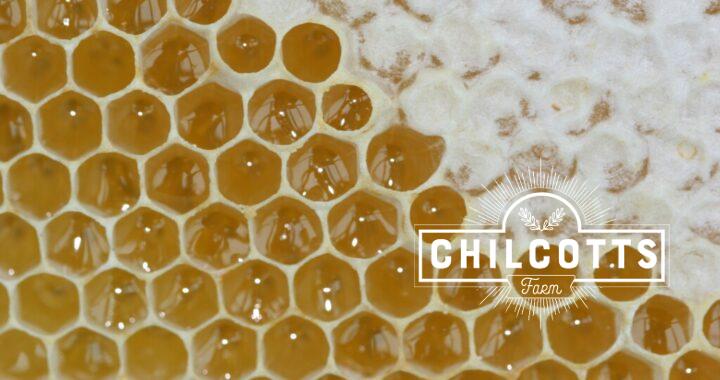

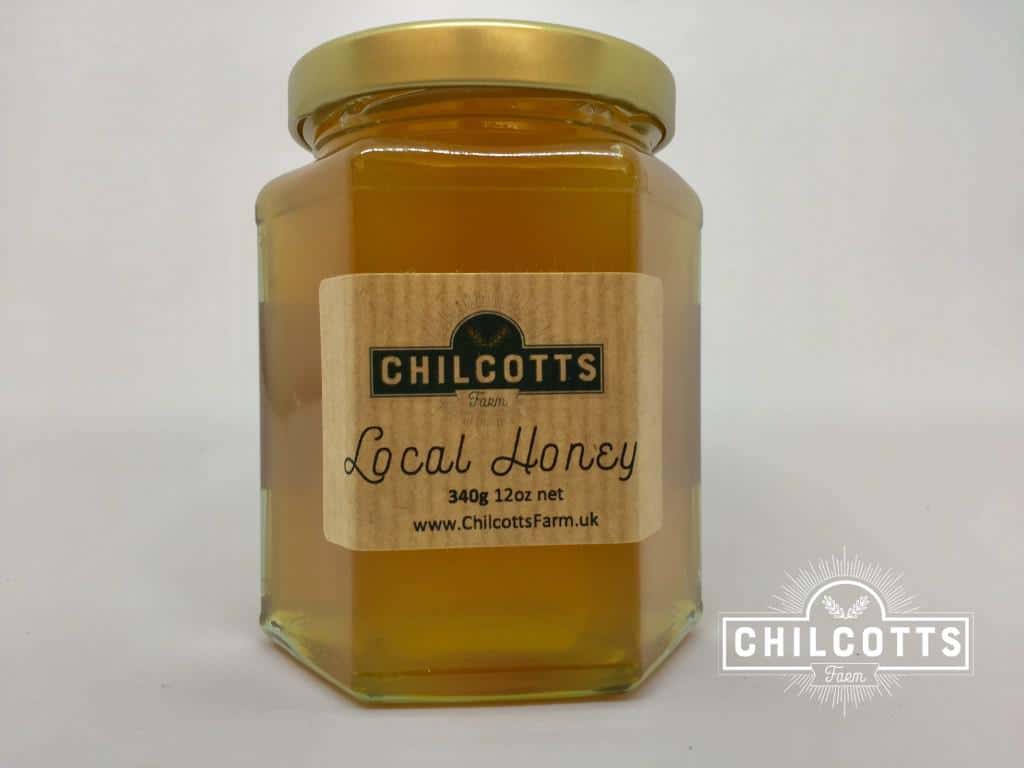
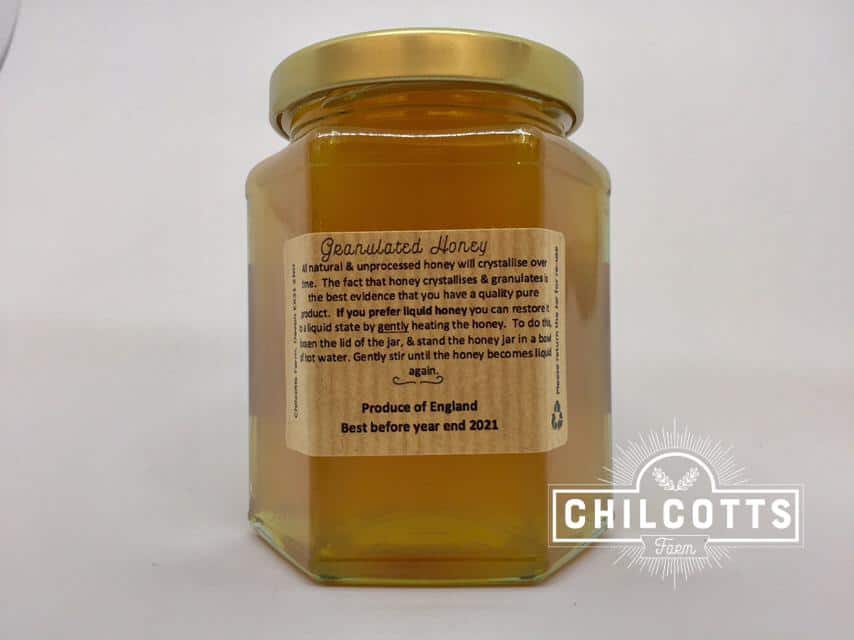

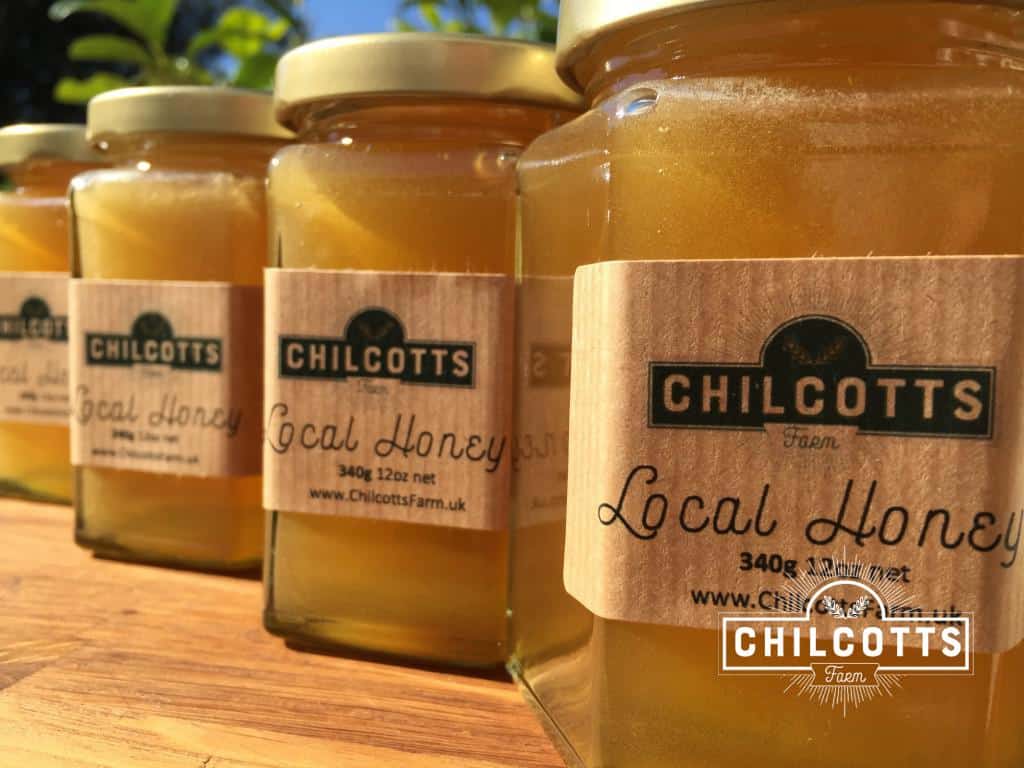
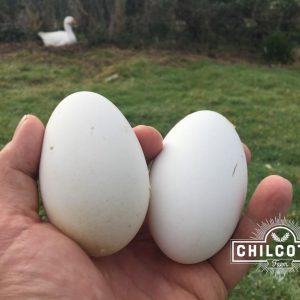
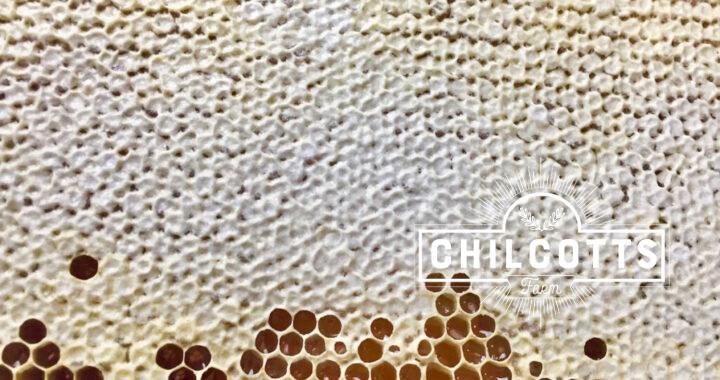
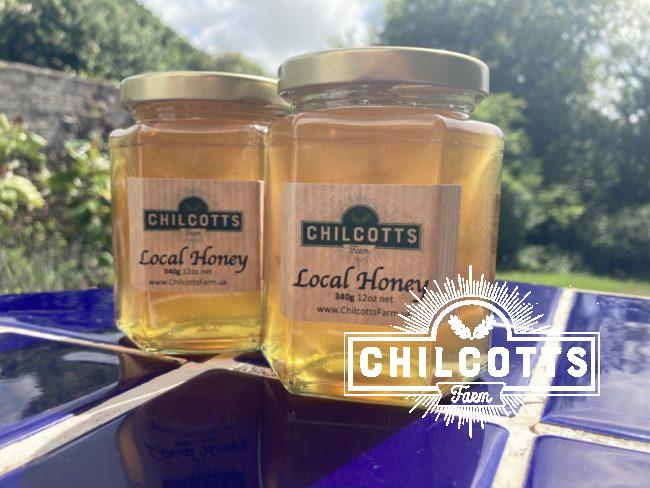
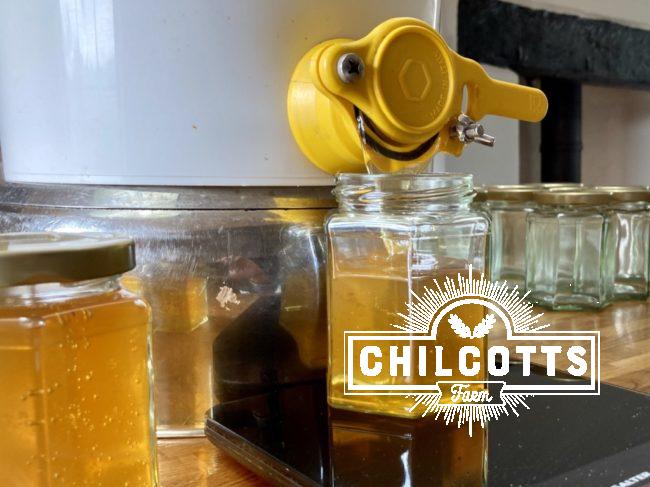
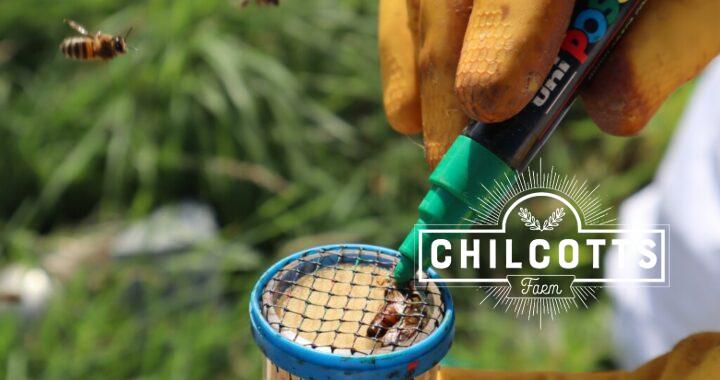
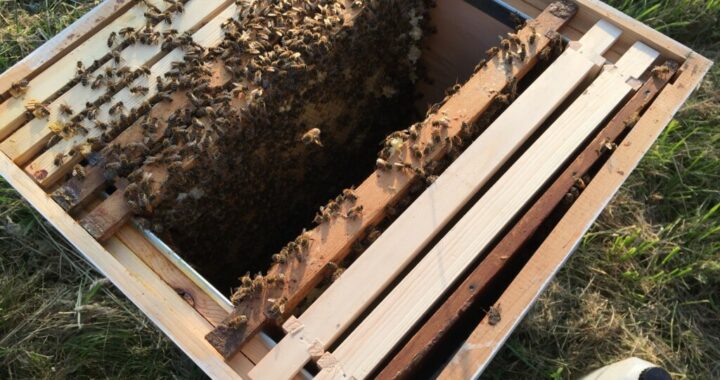
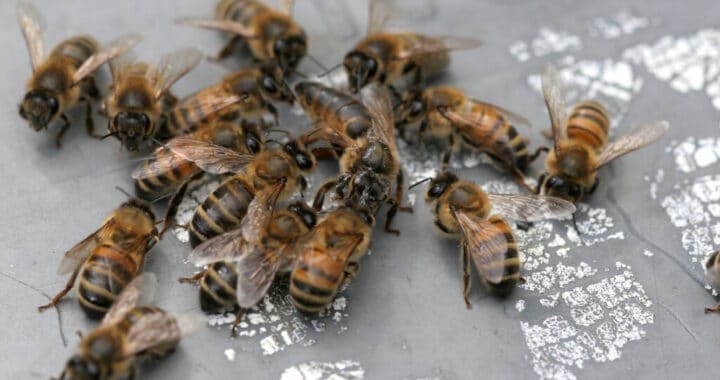
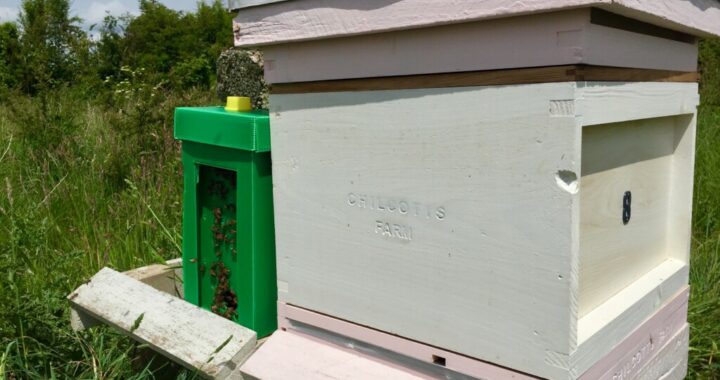
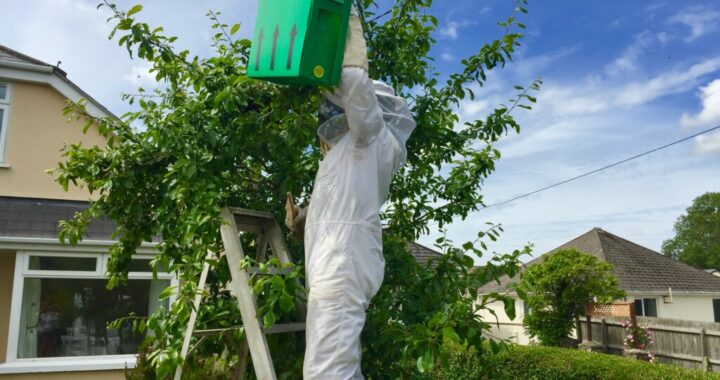
Reviews
There are no reviews yet.